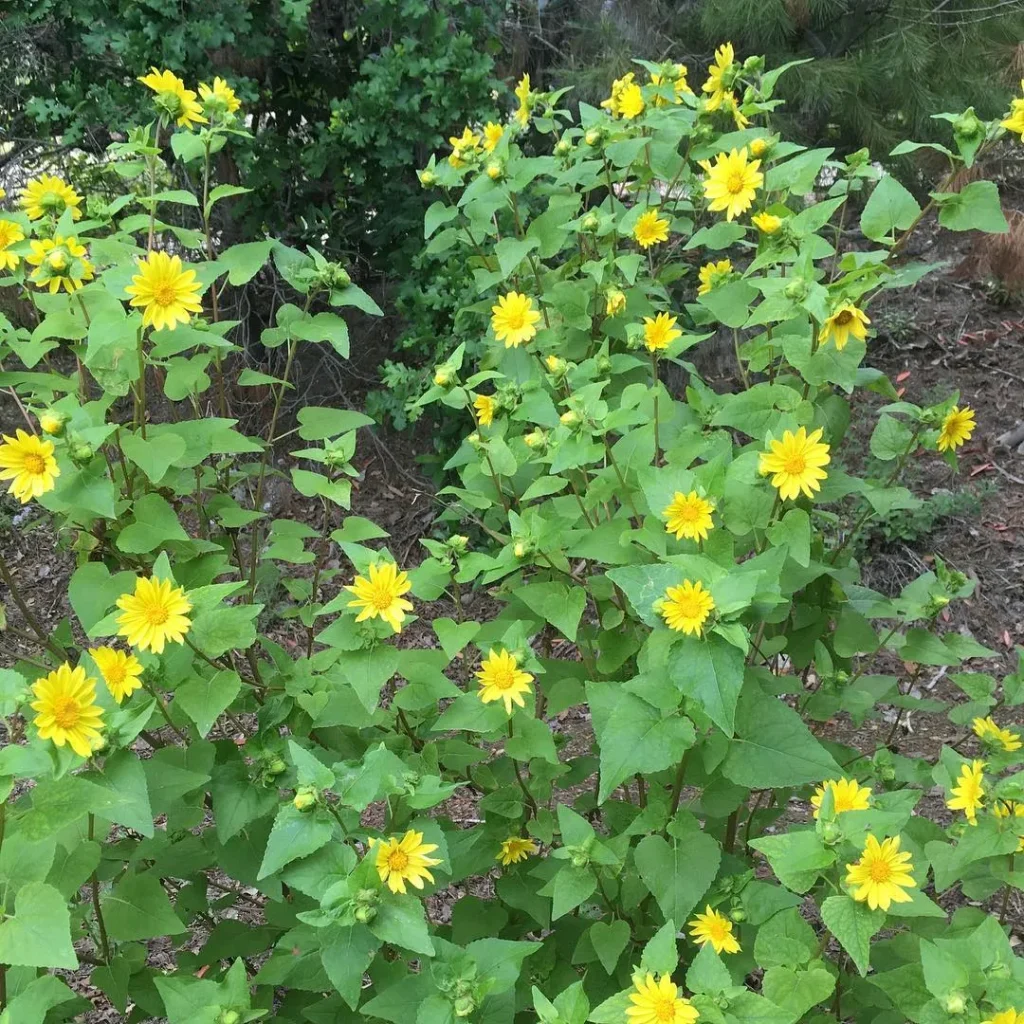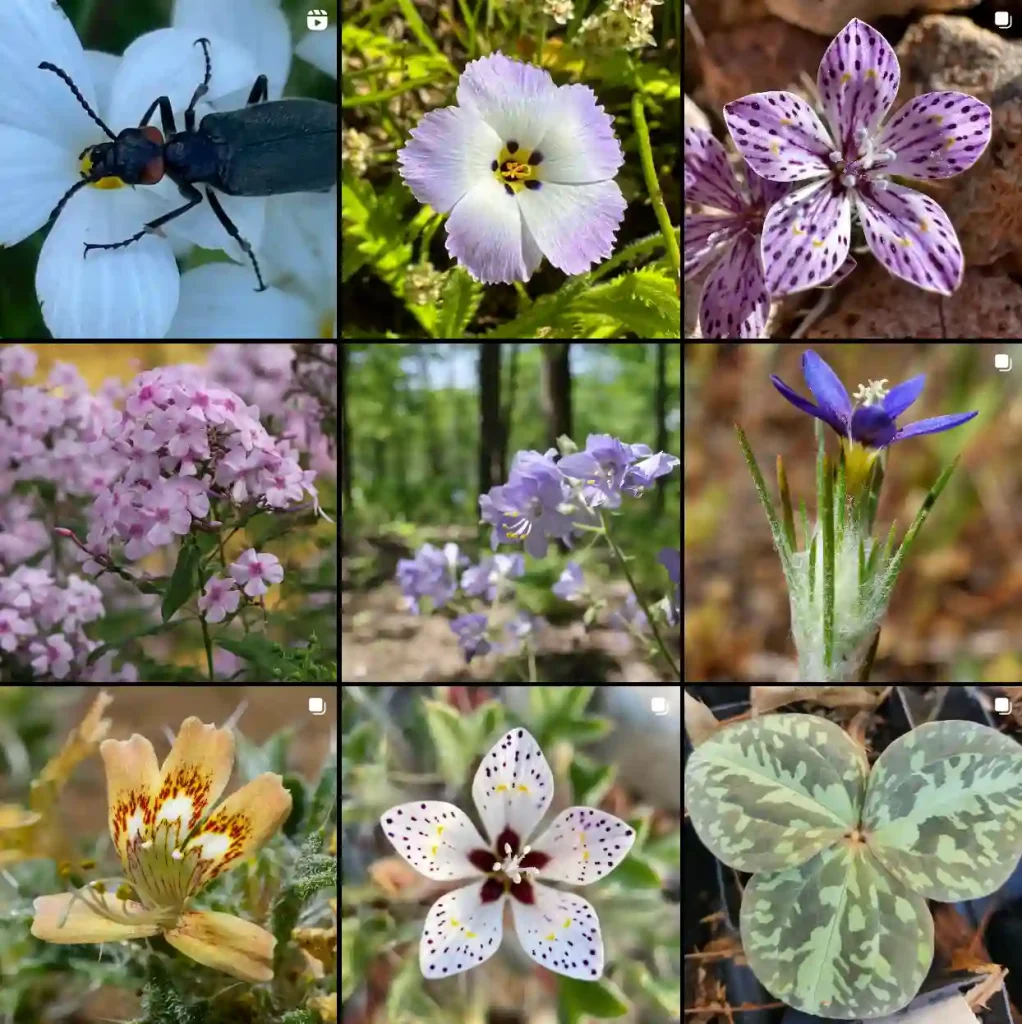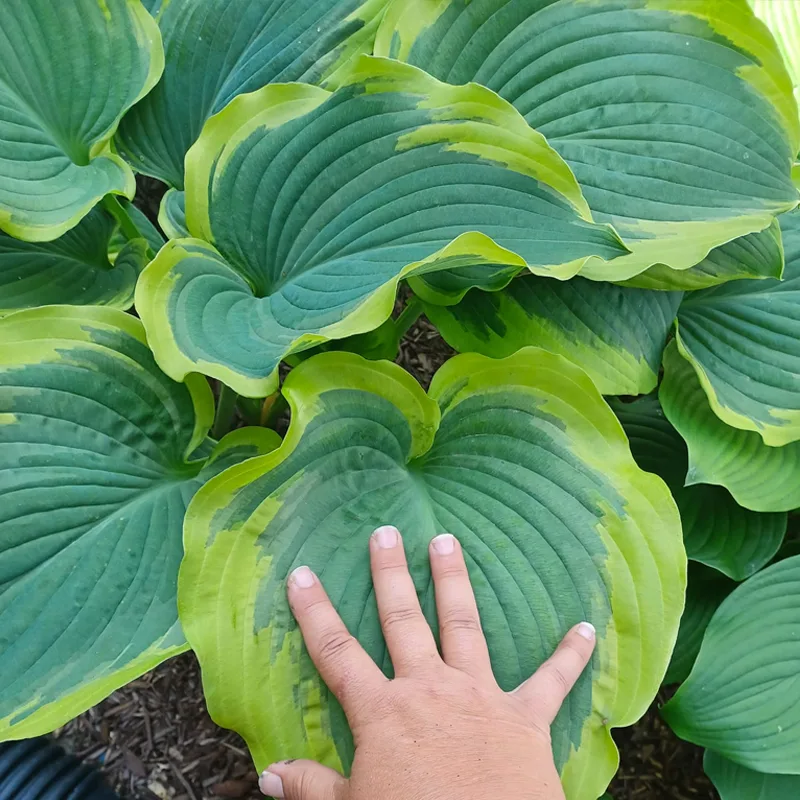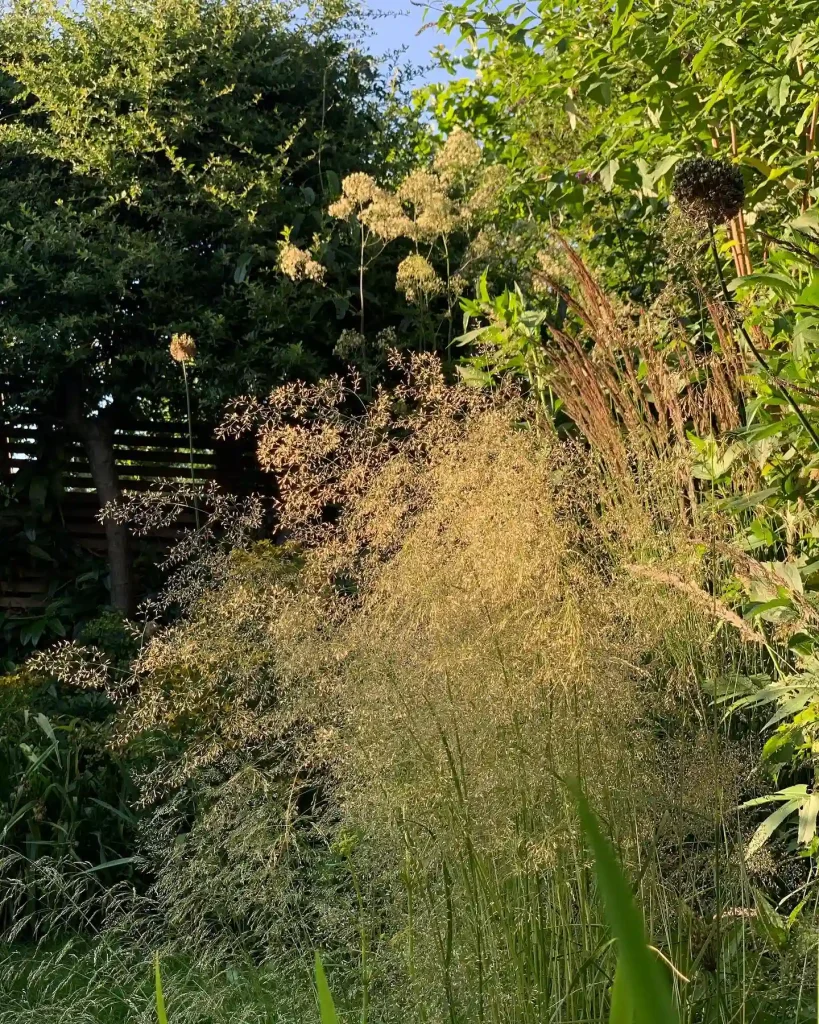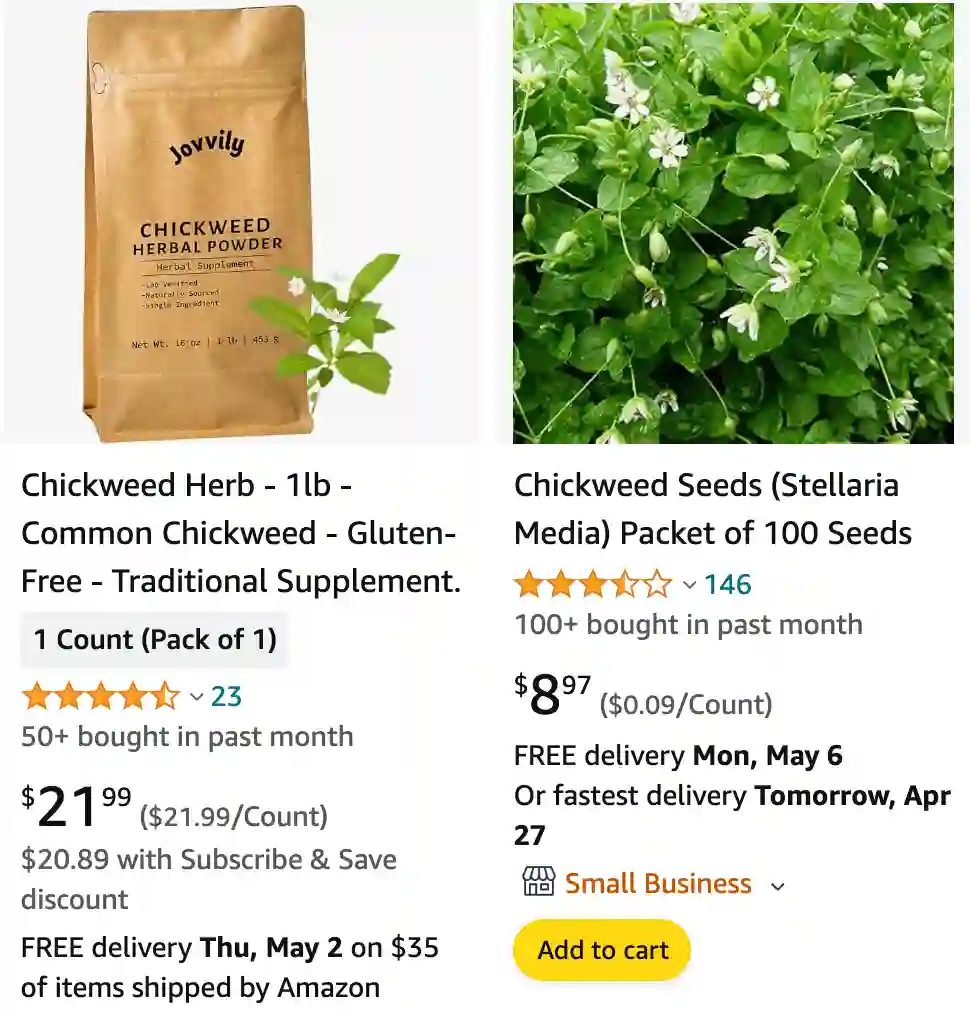
What is chickweed?
Chickweed is a common and persistent weed that often pops up in gardens, lawns, and other disturbed areas. It belongs to the genus Stellaria and is known for its rapid growth and ability to spread quickly. I’ve personally dealt with chickweed in my garden, and it can be quite a nuisance if left unchecked. While it may seem harmless at first glance, chickweed can quickly take over an area, crowding out desired plants and competing for resources. Its small, oval-shaped leaves and delicate white flowers make it fairly easy to identify once you know what to look for. Despite its tenacity, with some diligence and proactive measures, it’s possible to manage and control chickweed in outdoor spaces.
What does chickweed look like?
Chickweed is a pesky little plant that can be quite recognizable once you know what to look for. It has small, oval-shaped leaves arranged opposite each other along delicate stems. The leaves are typically bright green and smooth, with a pointed tip and a smooth margin. What really stands out are its tiny white flowers with five petals, which bloom in clusters at the ends of the stems. When I first encountered chickweed, I mistook it for a harmless ground cover until it started spreading rapidly throughout my garden. Now, whenever I spot those characteristic leaves and flowers, I know it’s time to take action to prevent it from taking over again.
How to get rid of chickweed? How to kill chickweed?
Getting rid of chickweed can be quite a task, but I’ve found a few effective methods through trial and error. One approach is to manually remove the chickweed by hand, making sure to pull it up by the roots to prevent regrowth. This can be time-consuming, especially if the infestation is widespread, but it’s a good way to start tackling the problem. Another method I’ve tried is using herbicides specifically formulated to target broadleaf weeds like chickweed. I prefer to use organic or environmentally friendly options to minimize the impact on the surrounding ecosystem. Additionally, maintaining a healthy lawn or garden by regularly mowing, watering, and fertilizing can help prevent chickweed from taking hold in the first place. It’s important to stay vigilant and address any new growth promptly to keep chickweed under control.
Is chickweed edible?
Yes, chickweed is indeed edible, and it’s actually quite nutritious! Despite being considered a weed in many gardens, chickweed has a long history of culinary use. Its tender leaves have a mild, slightly sweet flavor, and they can be enjoyed raw in salads or sandwiches. Chickweed can also be cooked as a green vegetable, added to soups, stews, or stir-fries. Some people even use it as a substitute for spinach or other leafy greens in recipes. Not only is chickweed tasty, but it’s also packed with vitamins and minerals, including vitamins A, C, and B, as well as calcium, potassium, and iron. Just be sure to harvest chickweed from areas that haven’t been treated with pesticides or other chemicals, and wash it thoroughly before eating.
What is chickweed good for?
Chickweed is surprisingly versatile and has a range of uses beyond just being a weed. Apart from being edible and nutritious, chickweed has various other beneficial properties. For centuries, it has been used in traditional herbal medicine for its soothing and healing properties. Chickweed is believed to have anti-inflammatory and antioxidant properties, making it useful for treating skin conditions such as eczema, psoriasis, and minor burns. Additionally, it’s often included in herbal remedies for digestive issues, such as soothing upset stomachs or relieving indigestion. Some people also use chickweed as a poultice or compress to reduce inflammation and promote wound healing. Overall, while chickweed may be considered a nuisance in the garden, it certainly has its own valuable role in natural medicine and wellness.
Where to buy chickweed?
Finding chickweed for purchase can be a bit tricky since it’s typically considered a weed rather than a cultivated plant. However, some specialty nurseries or herb suppliers may carry chickweed seeds or live plants for sale, especially if they cater to herbalists or enthusiasts of wild edibles. You might also have luck finding chickweed at farmers’ markets or health food stores that specialize in organic produce and herbs. Alternatively, you could consider foraging for chickweed in the wild, but be sure to do so responsibly and ethically, and always verify the safety of the foraged plants and the area they’re sourced from.
How to use vinegar to kill chickweed?
Using vinegar to kill chickweed is a popular natural and eco-friendly method. To make a vinegar solution, mix white vinegar with water in a spray bottle, typically in a 1:1 ratio. Some people also add a small amount of dish soap to help the solution adhere to the chickweed leaves. Once you’ve prepared the vinegar solution, simply spray it directly onto the chickweed, making sure to thoroughly coat the leaves and stems. The acetic acid in the vinegar works to desiccate and kill the plant. However, keep in mind that vinegar can also affect surrounding plants, so it’s important to apply it carefully and avoid spraying any plants you want to keep. Additionally, repeated applications may be necessary, as vinegar is not always as effective on established or perennial weeds.
Can chickens eat chickweed?
Yes, chickens can indeed eat chickweed, and they actually quite enjoy it! Chickweed is a nutritious treat for chickens, providing them with vitamins, minerals, and fiber. It’s safe for chickens to eat both the leaves and the tender stems of chickweed. Feeding chickweed to chickens can be a great way to supplement their diet, especially if they have access to limited foraging opportunities. Just be sure to offer chickweed in moderation, along with a balanced diet of poultry feed, grains, and other fresh greens. And always ensure that the chickweed hasn’t been treated with any pesticides or chemicals that could harm your feathered friends.
Can guinea pigs eat chickweed?
Yes, guinea pigs can eat chickweed and they generally enjoy it as a tasty and nutritious addition to their diet. Chickweed is rich in vitamins, minerals, and fiber, making it a healthy snack option for guinea pigs. You can offer chickweed to your guinea pig fresh, washed thoroughly to remove any dirt or contaminants. It’s best to introduce chickweed gradually into your guinea pig’s diet to ensure they tolerate it well. As with any new food, monitor your guinea pig for any signs of digestive upset or allergies. Additionally, make sure the chickweed is sourced from a safe and pesticide-free environment to avoid any potential health risks for your furry friend. Overall, chickweed can be a wonderful and natural treat to supplement your guinea pig’s regular diet of hay, pellets, and fresh vegetables.
How to eliminate chickweed?
Eliminating chickweed can be a bit of a battle, but there are several effective methods you can try. One approach is manual removal, where you carefully pull up the chickweed by hand, making sure to remove as much of the roots as possible to prevent regrowth. Another method is using herbicides specifically formulated to target broadleaf weeds like chickweed. However, I prefer to use organic or environmentally friendly options to minimize harm to the surrounding ecosystem. Applying a thick layer of mulch can also help smother chickweed and inhibit its growth. Additionally, maintaining a healthy lawn or garden by regular mowing, watering, and fertilizing can help prevent chickweed from taking hold in the first place. It’s important to stay vigilant and address any new growth promptly to keep chickweed under control.
Is chickweed invasive?
Chickweed can be considered invasive in certain contexts. While it’s a native plant in many regions, it has a tendency to spread rapidly and can become problematic when it starts to outcompete native vegetation or desired garden plants. In gardens and agricultural fields, chickweed can quickly establish itself and take over if left unchecked. Its ability to produce large quantities of seeds and thrive in a variety of conditions contributes to its invasive potential. However, the extent to which chickweed is invasive can vary depending on factors such as climate, soil conditions, and management practices. Overall, while chickweed may not be classified as invasive in all regions, it’s important to be mindful of its growth habits and take proactive measures to control it if necessary.
What is the best herbicide to kill chickweed?
There are several herbicides available that can effectively kill chickweed, but the best one depends on factors such as the specific needs of your garden, your environmental concerns, and your personal preferences. For those looking for organic or environmentally friendly options, herbicides containing ingredients like acetic acid (vinegar-based) or d-limonene (citrus oil-based) can be effective at killing chickweed while minimizing harm to surrounding plants and wildlife. On the other hand, synthetic herbicides containing ingredients like 2,4-D, dicamba, or glyphosate are also commonly used to control chickweed, but they may have more potential risks to consider. Before using any herbicide, it’s important to carefully read and follow the label instructions, wear appropriate protective gear, and consider the potential impact on the environment and non-target organisms. Additionally, it’s always a good idea to spot-test any herbicide in a small area before applying it more broadly to ensure it’s effective and doesn’t cause unintended damage.
How to use chickweed for weight loss?
Chickweed has been traditionally used in herbal medicine for various purposes, including weight loss. While there’s limited scientific evidence to support its effectiveness for this specific purpose, some people believe that chickweed may aid in weight loss due to its diuretic properties and potential ability to suppress appetite.
To incorporate chickweed into a weight loss regimen, you can consume it in various forms. One common method is to brew chickweed tea by steeping dried chickweed leaves in hot water for several minutes. You can drink this tea throughout the day as a refreshing and hydrating beverage.
Additionally, you can add fresh chickweed leaves to salads, smoothies, or cooked dishes as a nutritious and low-calorie ingredient. Just be sure to wash the leaves thoroughly before consuming them.
As with any weight loss strategy, it’s important to approach it holistically by combining chickweed consumption with a balanced diet, regular exercise, and healthy lifestyle habits. It’s also a good idea to consult with a healthcare professional before making any significant changes to your diet or starting any new herbal supplements, especially if you have any underlying health conditions or concerns.
Does chickweed die in summer?
Chickweed is typically a cool-season annual weed, meaning it thrives in cooler temperatures and tends to die off as temperatures rise in the summer months. However, chickweed can also exhibit some resilience in mild climates or if it’s growing in shaded or moist areas. In particularly hot and dry conditions, chickweed may wilt or die back temporarily but can rebound when temperatures cool down or moisture levels increase.
In general, though, the peak growing season for chickweed is during the cooler months of spring and fall, and it tends to decline or disappear as temperatures become consistently warmer in the summer. This natural die-off in summer can provide a reprieve for gardeners and landscapers battling chickweed infestations, but it’s important to remain vigilant and take preventive measures to minimize its return in the following seasons.
How to harvest chickweed?
Harvesting chickweed is a straightforward process, but it’s important to do it carefully to ensure you gather the freshest and cleanest leaves. Here’s how I typically harvest chickweed:
- Identify chickweed: Familiarize yourself with the appearance of chickweed to ensure you’re harvesting the correct plant. Chickweed has small, oval-shaped leaves arranged opposite each other along delicate stems, with tiny white flowers.
- Choose a harvesting location: Look for chickweed in areas where it grows abundantly, such as gardens, lawns, or along paths. Make sure the area hasn’t been treated with pesticides or chemicals that could harm you or contaminate the chickweed.
- Use clean tools: Before harvesting, make sure your hands or gardening tools are clean to prevent contamination. You can use scissors or garden shears to snip off the chickweed stems just above the soil level.
- Harvest tender parts: Focus on harvesting the tender, young parts of the plant, such as the tips of the stems and the top few inches of leaves. These parts are typically the most flavorful and nutritious.
- Wash thoroughly: Once you’ve gathered the chickweed, rinse it thoroughly under cold water to remove any dirt, debris, or potential contaminants. You can use a colander or salad spinner to help with this process.
- Use immediately or store: Chickweed is best used fresh, so try to use it soon after harvesting for the most vibrant flavor and nutritional benefits. If you can’t use it right away, you can store it in the refrigerator in a breathable container lined with a paper towel to absorb excess moisture.
By following these steps, you can harvest chickweed safely and enjoy its fresh taste in your culinary creations or herbal remedies.
How to make chickweed salve?
Making chickweed salve is a simple and rewarding process. Here’s a basic recipe to get you started:
Ingredients:
- 1 cup fresh chickweed leaves and stems
- 1 cup carrier oil (such as olive oil, coconut oil, or almond oil)
- Beeswax (approximately 1-2 ounces, depending on desired consistency)
- Optional: essential oils for fragrance or additional therapeutic benefits (such as lavender or tea tree oil)
Instructions:
- Harvest and wash the chickweed: Gather fresh chickweed from a clean and pesticide-free area. Rinse the chickweed thoroughly under cold water to remove any dirt or debris. Pat it dry with a clean towel.
- Infuse the oil: Place the clean chickweed in a glass jar and cover it with the carrier oil of your choice. Make sure the chickweed is completely submerged in the oil. Seal the jar tightly and place it in a sunny windowsill or another warm location to infuse for 4-6 weeks, shaking the jar gently every day to distribute the ingredients.
- Strain the oil: After the infusion period, strain the oil through a fine mesh strainer or cheesecloth into a clean container, pressing on the chickweed to extract as much oil as possible.
- Prepare the salve base: In a double boiler or makeshift double boiler (such as a heatproof bowl placed over a pot of simmering water), melt the beeswax until it’s fully liquefied.
- Combine the ingredients: Once the beeswax is melted, add the infused chickweed oil to the double boiler and stir to combine. If desired, add a few drops of essential oil for fragrance or additional benefits.
- Test the consistency: To test the consistency of the salve, place a small spoonful on a plate and allow it to cool. If the salve is too soft, add more beeswax. If it’s too hard, add more infused oil.
- Pour into containers: Once you’ve achieved the desired consistency, carefully pour the salve into clean, sterilized containers, such as small jars or tins. Allow the salve to cool and solidify completely before sealing the containers.
- Label and store: Label your chickweed salve with the date and ingredients used. Store it in a cool, dark place away from direct sunlight and moisture.
Your homemade chickweed salve is now ready to use! Apply it topically to soothe minor skin irritations, dry patches, or insect bites. Enjoy the benefits of this natural herbal remedy!
If i die, water my plants!
